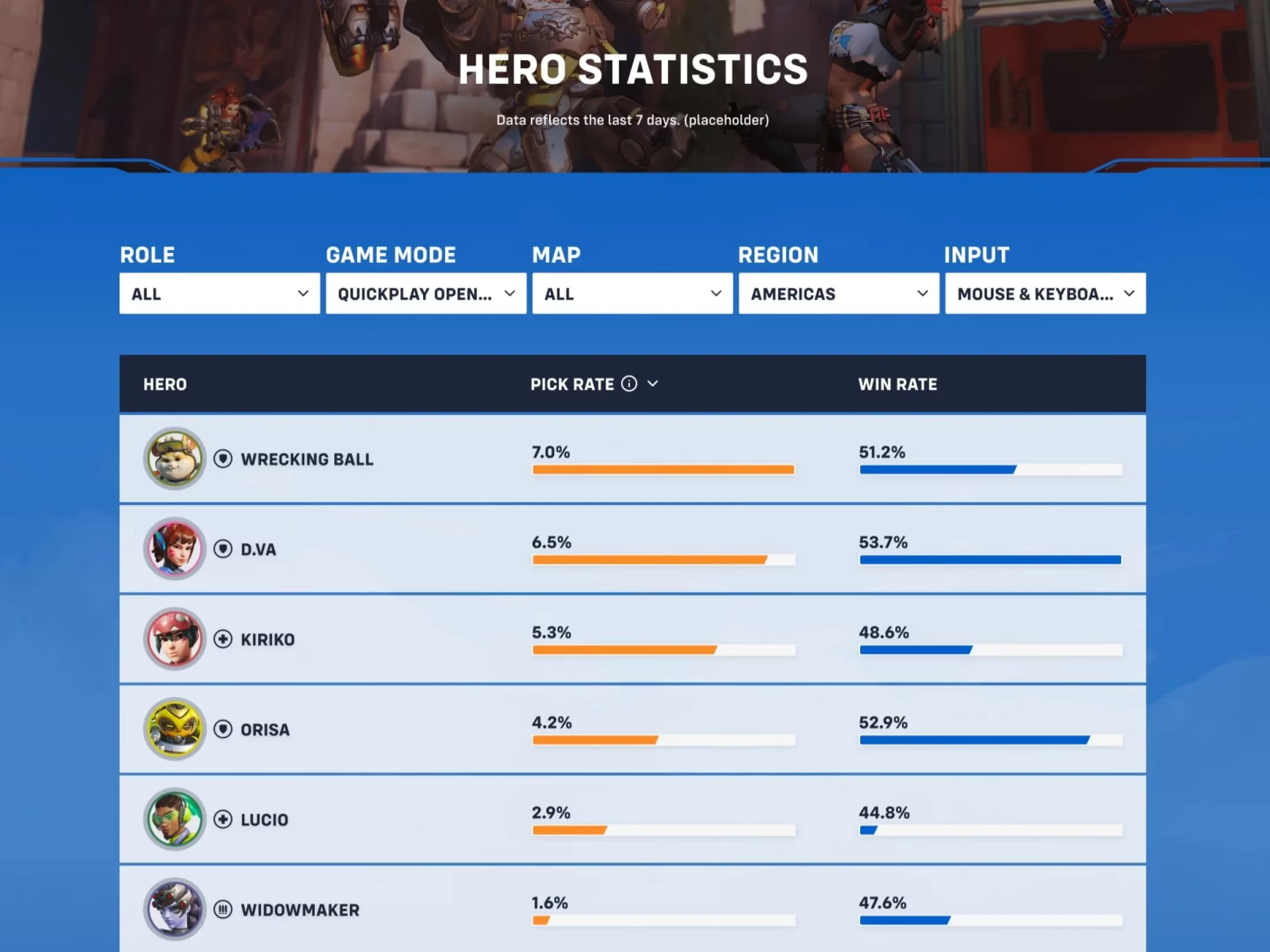I've just witnessed Blizzard's groundbreaking announcement that fundamentally shifts how we track performance in Overwatch 2, and honestly, it's about time. The revelation came straight from Associate Director Alec Dawson's latest Director's Take blog, where he explored that delicate dance between spoon-feeding data versus preserving the magical "discovery window"—that fleeting period after major updates when players collectively experiment and unravel new strategies like detectives at a conspiracy board. Dawson admitted this balancing act keeps developers awake at night: revealing too much kills the thrill of experimentation, yet withholding critical info frustrates competitive players. Now, they're bridging this gap with two game-changers: the Hero Stats website and Advanced Info Panel. The timing couldn't be more perfect—with Season 18's August 26 launch hurtling toward us and Ultraviolet Sentinel Sojourn's mythic skin gleaming on the horizon, these tools promise to transform how we analyze every duel, payload push, and ultimate combo. I'm already imagining how these innovations could redefine my nightly gaming sessions, especially with the mysterious support hero Wuyang joining the fray soon. 
🔍 Hero Stats: Your Personal Overwatch Data Laboratory
This external Battle.net portal feels like Blizzard handing us the analytics keys to the kingdom. I mean, we're talking granular win/pick rates—the same metrics developers use for balance tweaks—but customizable down to absurdly specific scenarios. Feeling stuck in Diamond? Filter stats by Plat players on Control maps in Asia using controllers, and suddenly patterns emerge. The mock-up shows you can dissect heroes by:
-
Role (Tank/Damage/Support)
-
Game mode (Push, Escort, Hybrid)
-
Specific maps (Circuit Royal, Shambali Monastery)
-
Geographic region 🌍
-
Input method (controller vs. mouse/keyboard)
What excites me most isn't just the transparency; it's how this could democratize meta-analysis. Casual players can finally see why that off-meta Reinhardt pick isn't working in Bronze, while pros might spot regional trends nobody noticed. Dawson hinted this data deluge helps explain unpopular balance changes too—imagine understanding exactly why Cassidy's falloff range got nerfed last season. Still, I wonder if seeing win rates might ironically stifle creativity; will players abandon heroes with temporarily low stats instead of innovating? 
🎮 Advanced Info Panel: In-Game Math Made Beautiful
Here’s where things get tactile—no more alt-tabbing to wikis mid-match. Launching in Season 18, this in-game overlay transforms ability tooltips into encyclopedic breakdowns. Picture hovering over Hanzo’s Storm Bow and seeing exact headshot multipliers, or checking Cassidy’s Peacekeeper to visualize damage drop-off graphs. These aren’t vague descriptors; they’re pixel-perfect calculations that turn guesswork into strategy. For someone like me who mains support, knowing exact heal rates per second during ultimates could mean life-or-death decisions. Blizzard’s examples suggest unprecedented precision:
| Ability Detail | Old System | Advanced Panel |
|---|---|---|
| Damage Values | "Deals heavy damage" | "Headshot: 250 dmg" |
| Range Effects | "Effective at medium range" | "Falloff starts at 20m" |
| Cooldown Clarity | "Short cooldown" | "8 second recharge" |
The implications? New players learn faster, veterans optimize builds, and theory-crafters get hard data to exploit synergies. Though honestly, I’m nostalgic for those chaotic early days when we tested Zarya bubbles through trial-and-error. Will spoon-feeding numbers erode that satisfying "Eureka!" moment? 
⏳ Season 18: More Than Just Numbers
While Hero Stats lacks a release date (come on, Blizzard!), the Advanced Panel drops August 26 alongside other fireworks. Ultraviolet Sentinel Sojourn’s mythic skin—glowing with cosmic particle effects—already dominates teasers, and support hero Wuyang’s kit reveal looms. Dawson’s blog subtly framed these features as responses to player frustration over opaque balancing; remember the outcry when Sombra’s stealth duration changed inexplicably? Now, we’ll see the metrics driving those decisions. Yet, I’m conflicted: data empowers, but Overwatch thrives on chaotic creativity. If every player chases optimal win-rate picks, do we lose the beautiful madness of 5-DPS comps that somehow work? Maybe these tools won’t homogenize playstyles but instead reveal hidden gems—like realizing Symmetra dominates on tight-cornered maps. As I prep for Season 18’s meta shakeup, one question lingers: Will quantified transparency make us better players, or just turn Overwatch into a spreadsheet simulator? 